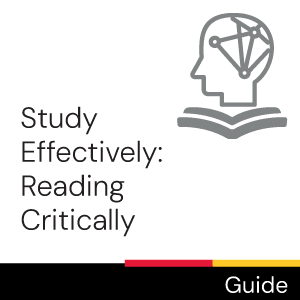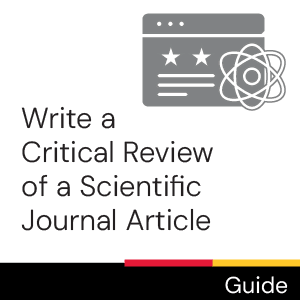Time commitment
Less than 2 minutes
Description
This short Library video will show you how to read an academic article for a research-based assignment.
Video
Transcript
[Background music plays throughout]
This short Library video will show you how to read an academic article for research-based assignments.
[University of Guelph, McLaughlin Library]
Selecting articles.
When selecting articles consider the following: What information do I need for my assignment? How does this article relate to my research topic? What new information do I hope to learn or understand by reading all or parts of this article?
Article formats can vary by discipline but here are some general tips to keep in mind.
Before you read an article, ask yourself: What is this article's purpose? Who is its intended audience? What unique information will this article contribute to my thesis or research argument?
[An example of an academic article is slowly scrolled through]
Skimming and scanning.
Skimming and scanning are techniques that can help you read and find information efficiently. Skimming refers to reading only the main ideas to get an overall impression of an article. We do this to save time and determine what to read more thoroughly later.
[A couple of main ideas are highlighted throughout an article]
Scanning is a reading technique used to find specific information quickly. While scanning we read only to find the answer to a question, ignoring unrelated information.
[A specific section of an article is highlighted]
With journal articles we use structure to quickly locate relevant information: Read the Title, though note that titles can be misleading. Read the abstract. Observe the figures and illustrations, the introduction, discussion section, and conclusion, which can tell us many things before we read an article in its entirety.
[Examples of the main structure elements are highlighted]
Some scholarly texts, written for highly specialized audiences, can be content heavy and take longer to read. Be prepared to rule out difficult articles or divide your reading into smaller sections, space out your reading, and use a dictionary and other resources to understand the content.
[A figure within an article consisting of several complex graphs and schematic diagrams is highlighted]
Looking for additional background information.
A useful journal article can lead to other relevant sources. If your article has one, observe the literature review or recommendations for further reading. You should also consult the list of references or end notes at the end of the article to locate related material – keeping in mind that scholarly texts can be content heavy and take longer to read. Therefore, divide your reading into smaller sections and space out your readings to better understand the materials.
[Continuing to scroll through the article highlighting the Literature Review and References headings]
Need help? Ask Us. Chat, E-mail, phone, or drop by. You can also book an appointment with a learning specialist through the UoGuelph Library website. This concludes the library video on how to read an academic article.
[Questions? Reach Out! library@uoguelph.ca lib.uoguelph.ca. Twitter and Instagram @uglibrary. Facebook /McLaughlinLibrary. YouTube /UoGLibrary]
[Music: Summer by Benjamin Tissot. Retrieved from https://www.bensound.com]
For more information about our services, and what we're offering this semester, visit our website: www.lib.uoguelph.ca.
To get up-to-date information about workshops and events, follow us on social.
Twitter - https://twitter.com/uglibrary
Instagram - https://www.instagram.com/uglibrary/
Facebook - https://www.facebook.com/McLaughlinLibrary
License

This work is licensed under a Creative Commons Attribution-NonCommercial-ShareAlike 4.0 International License.
Recommended
- Ask Chat is a collaborative service
- Ask Us Online Chat hours
- Contact Us

